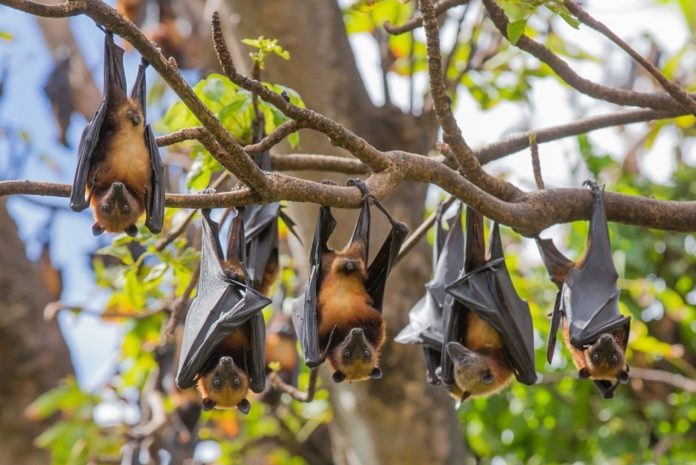The main origin of the COVID-19 (SARS-CoV-2) still remains a mystery, but the virus most probably came to humans from bats.
They are known be carrying a wide variety of coronaviruses, many of which resemble to the strain behind COVID-19.
A new study published on May 31 in the journal Nature Food, led by a team of scientists from the US, Italy, and New Zealand studying the effects of human activities and land use, has recognized China as the highest concentration of hotspots where humans may come into contact – directly or indirectly – with these infected bats.
- Does This Mean We Stopped Being Animal and Started Being Human Due to ‘Copy Paste’ Errors?
- The One Lifestyle Choice That Could Reduce Your Heart Disease Risk By More Than 22%
- Aging: This Is What Happens Inside Your Body Right After Exercise
- Immune-Boosting Drink that Mimics Fasting to Reduce Fat – Scientists ‘Were Surprised’ By New Findings
- Gun Violence in America: What They Don’t Talk About at the Debate
Forest destruction or Deforestation, sprawling urbanization, and industrial-scale livestock raising all give rise to the risk of zoonotic viruses infecting humans.
Zoonotic viruses are the ones that have jumped from an animal host to humans.
Till today, only seven such kind of coronaviruses are known to have infected humans, three of which known as the SARS, MERS and COVID-19 pandemic in recent years.
The new research with the help of remote sensing technology has highlighted potential hotspots where known bat habitats meet with farmland, human settlements, and forest fragmentation.
Professor Maria Cristina Rulli from the Politecnico di Milano, said:
The analyses aimed to identify the possible emergence of new hotspots in response to an increase in one of three land-use attributes, highlighting both the areas that could become suitable for spillover and the type of land-use change that could induce hotspot activation.
We hope these results could be useful for identifying region-specific targeted interventions needed to increase resilience to coronavirus spillovers.
The study comes when we all are surrounded by the tragic death toll of COVID-19, which has infected more than 169.5 million and killed more than 3.5 million.
As the study suggests, most of the latest hotspots are in China.
China is already considered to be ground zero for the ongoing pandemic, with COVID-19 first emerging in Wuhan City, Hubei Province, late in 2019.
China has a rising demand for meat, which is driving the mass-scale breeding of livestock.
Industrial-scale livestock breeding is problematic because it is extremely vulnerable to the outbreak of disease.
The H7N7 “bird flu” virus, for instance, has been linked to intensive poultry production, leading to countries like the Netherlands to cull some 30 million birds.
Professor Paolo D’Odorico from Univesity of California Berkeley, said:
Land use changes can have an important impact on human health, both because we are modifying the environment, but also because they can increase our exposure to zoonotic disease.
Every formal land use change should be evaluated not only for the environmental and social impacts on resources such as carbon stocks, microclimate and water availability, but also for the potential chain reactions that could impact human health.
There is a risk parts of Japan, the north Philippines and China south of Shanghai could also become new hotspots due to Deforestation.
- Does This Mean We Stopped Being Animal and Started Being Human Due to ‘Copy Paste’ Errors?
- The One Lifestyle Choice That Could Reduce Your Heart Disease Risk By More Than 22%
- Aging: This Is What Happens Inside Your Body Right After Exercise
- Immune-Boosting Drink that Mimics Fasting to Reduce Fat – Scientists ‘Were Surprised’ By New Findings
- Gun Violence in America: What They Don’t Talk About at the Debate
The want for livestock, meanwhile, could turn parts of Thailand and Indochina into hotspots as well.
The destruction of forests increases the likelihood of zoonotic viruses spreading by shifting the balance in wildlife species.
So-called “specialist” species that require specific habitat conditions to survive start to dwindle, allowing so-called “generalist” species to thrive.
Generalists adapt better to the changing habitats and horseshoe bats happen to fit the bill.
Consequently, researchers expect to see these potentially infected animals in areas where human activity is regular.
Previous research has suggested the spread of the Ebola virus in Africa is connected to the destruction of habitats and forests.
Professor D’Odorico said:
By creating conditions that are disadvantageous to specialist species, generalist species are able to thrive.
While we are unable to directly trace the transmission of SARS-CoV-2 from wildlife to humans, we do know that the type of land-use change that brings humans into the picture is typically associated with the presence of these bats who are known to carry the virus.
One way to avoid future outbreaks of disease is to restore wildlife habitats by creating continuous areas of forest cover for specialist species to thrive.
Professor D’Odorico added:
Human health is intertwined with environmental health and also animal health.
Our study is one of the first to connect the dots and really drill down into the geographic data on land use to see how humans are coming into contact with species that might be carriers.
- Does This Mean We Stopped Being Animal and Started Being Human Due to ‘Copy Paste’ Errors?
- The One Lifestyle Choice That Could Reduce Your Heart Disease Risk By More Than 22%
- Aging: This Is What Happens Inside Your Body Right After Exercise
- Immune-Boosting Drink that Mimics Fasting to Reduce Fat – Scientists ‘Were Surprised’ By New Findings
- Gun Violence in America: What They Don’t Talk About at the Debate
Image Credit: Getty
